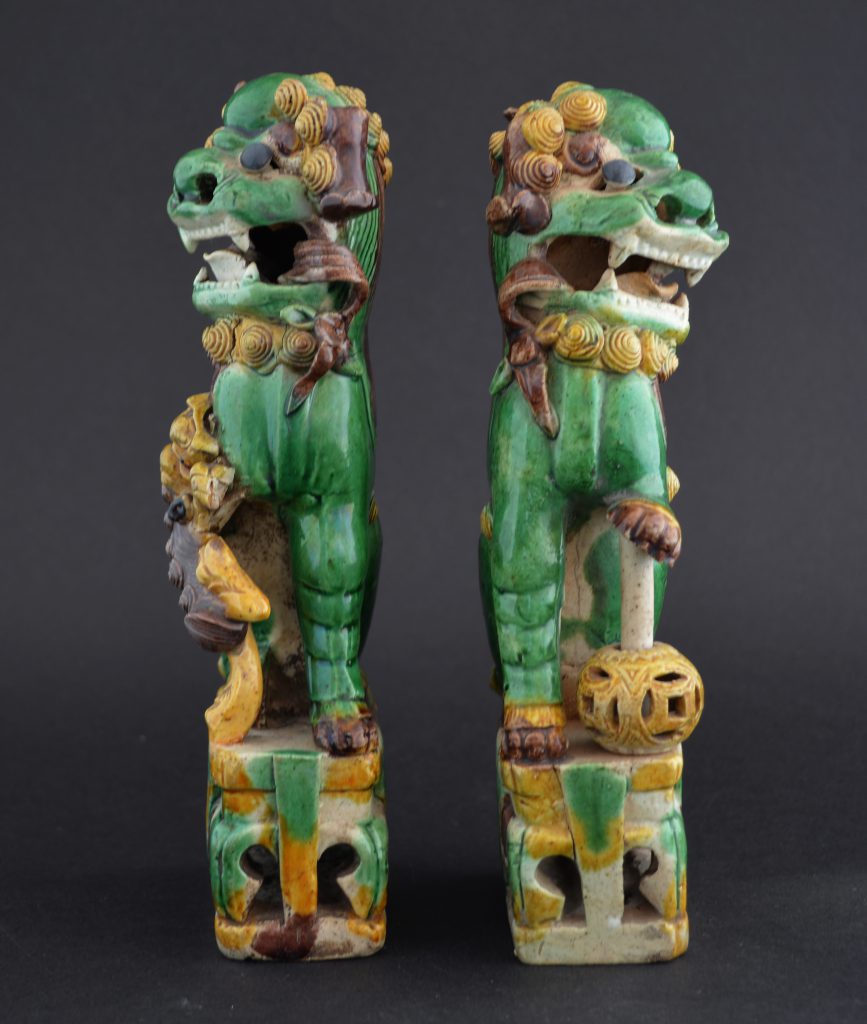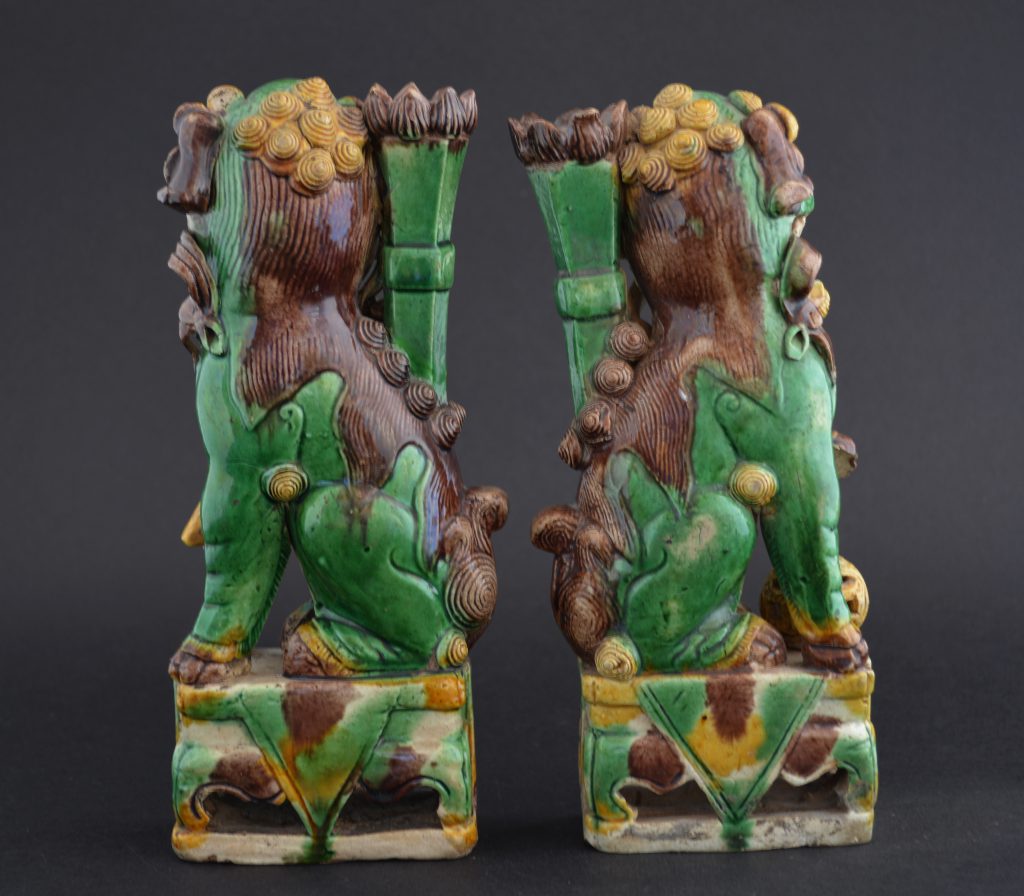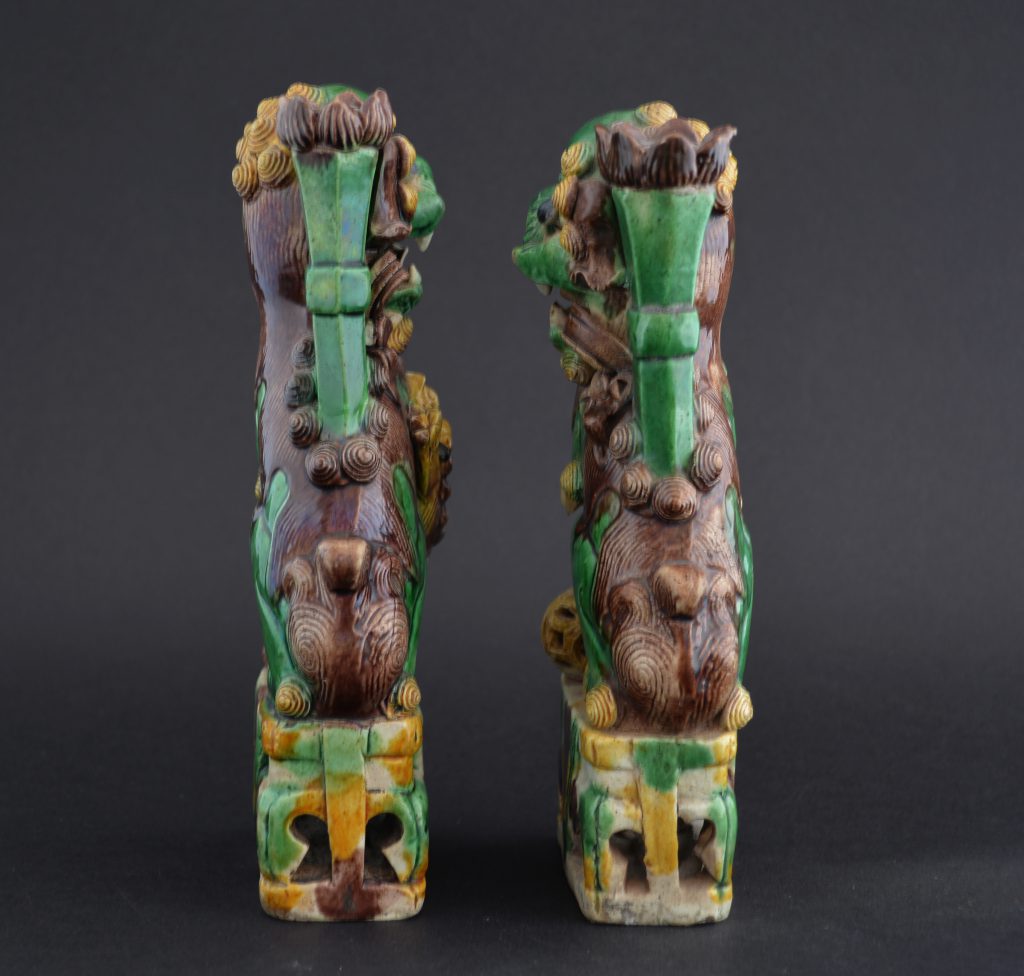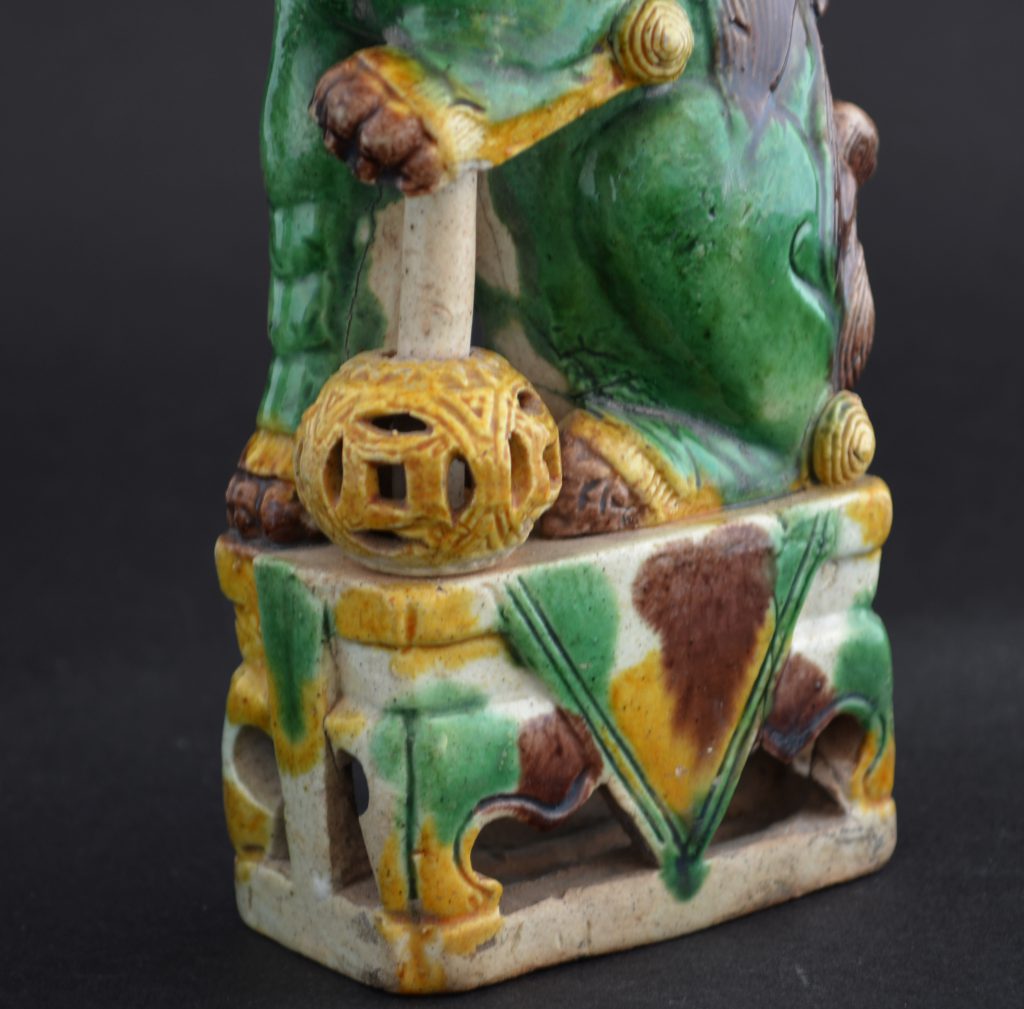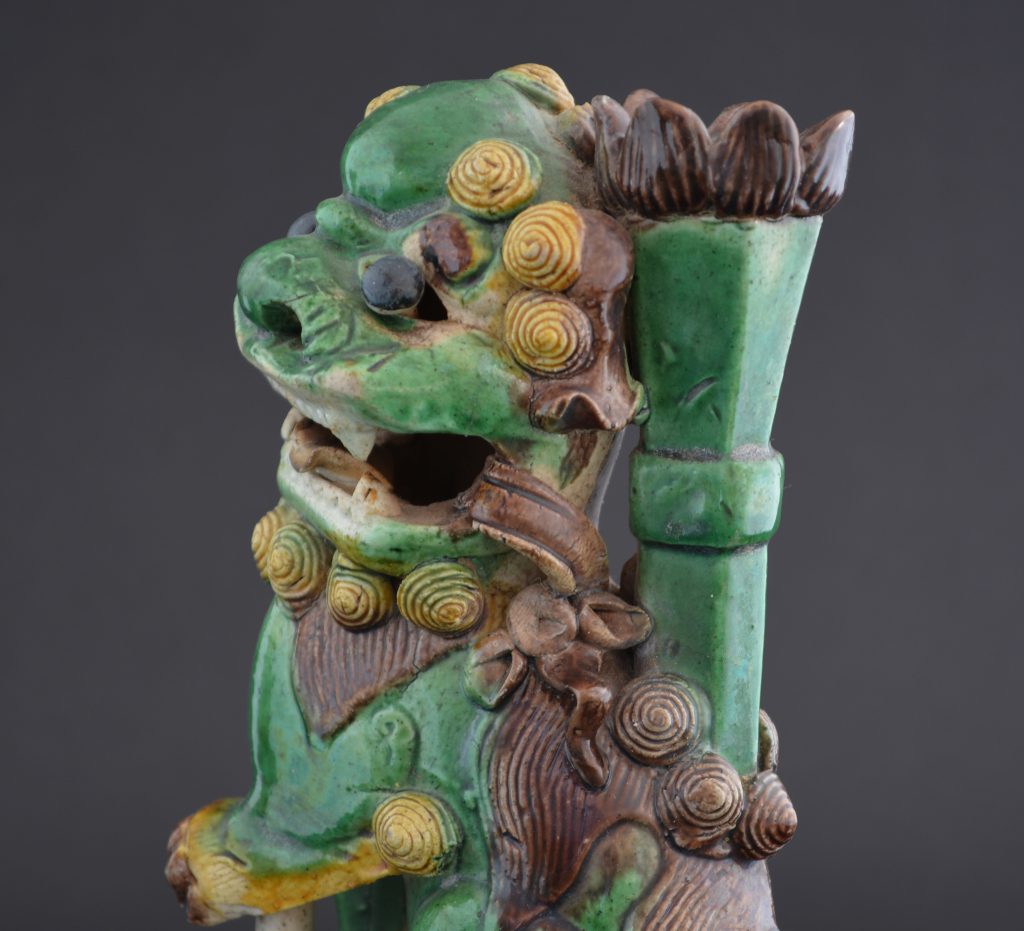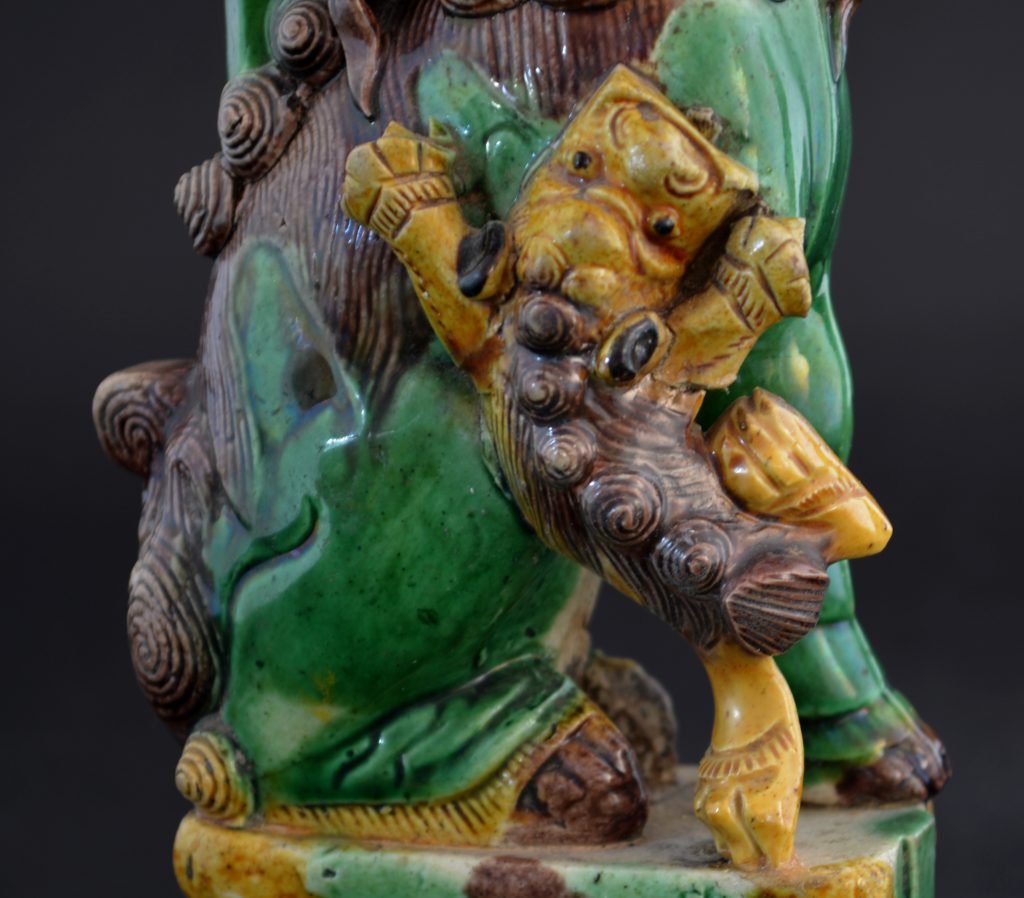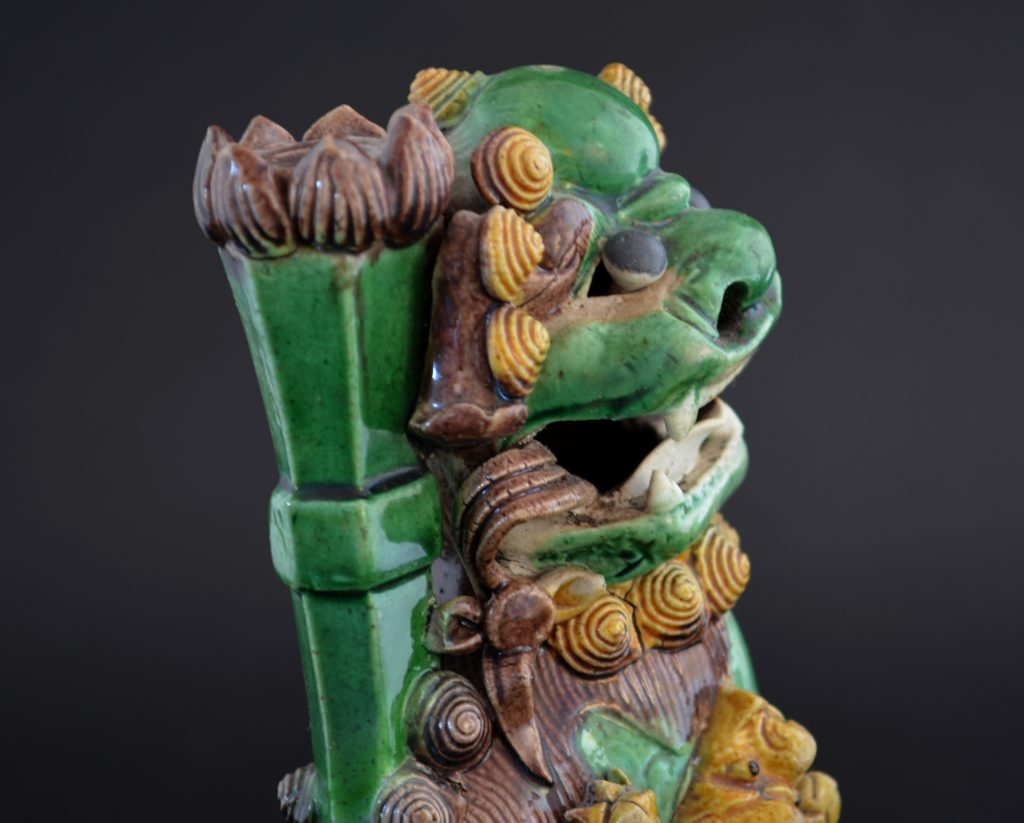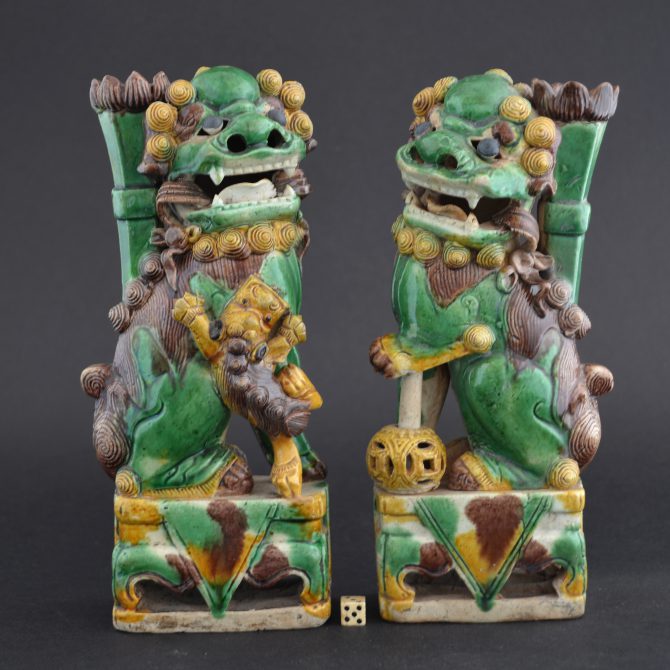
KANGXI or YONGZHENG c.1680 – 1730 Chinese Biscuit Porcelain
A Pair of Kangxi or Yongzheng Famille Verte Biscuit Porcelain Incense Holders Modelled as a Male Fu Dogs with a Brocade Ball.
SOLD
- Condition
- In very good condition, one with the applied petal decoration around the incense stick holder restored, the other with very minor restoration in the same place. It is unusual to find a pair of biscuit porcelain Fu dogs in such good condition.
- Size
- Height : 20 cm (8 inches)
- Provenance
- N/A
- Stock number
- 24365
- References
- For a Kangxi Famille Verte biscuit Fu dog of this type with it`s companion see : La Collection de Porcelaines Chinoises de, The Chinese Porcelain Collection of Marie Vergottis (John Ayres, Foundation George et Marie Vergottis-Lausanne, Les Bibliotheque des Arts, 2004. ISBN 2-88453-116-5) page 96, items 75 and 76. For another but single Kangxi Famille Verte biscuit Fu dog see our `Sold Items` number 24100.
Information
Fu Dog, Buddhist Lion or Fo Dog :
When Buddhist priests, or possibly traders, brought stories to China about stone dogs guarding the entry to Indian Buddhist temples, Chinese sculptors modelled statues after native dogs for use outside their temples. The mythic version of the animal, was known as the Dog of Fo, the word Fo being Chinese for Buddha. The Buddhist version of the dog was originally introduced to Han China as the protector of dharma and these dogs have been found in religious art as early as c.200 BC. Gradually they were incorporated as guardians of the Chinese Imperial dharm. However, Chinese sensitivity metamorphosed the dog into a lion, even though lions were not indigenous to China, since this seems more appropriate to the dignity of an emperor when he used the beasts to guard his gates. The mythic dog is sometimes associated with feng shui, and are often called Fu Dogs. Fu means `happiness` in Chinese; however, the term `Fu Dog` and its variant Foo Dog, are not used in Chinese. Instead, they are known as Rui Shi (`auspicious lions`) or simply Shi (lions). There are various styles of imperial guardian lions reflecting influences from different time periods, imperial dynasties, and regions of China. These styles vary in their artistic detail and adornment as well as in the depiction of the lions from fierce to serene.
Egg and Spinach Decoration :
This is another of those Western terms used to categorize Chinese ceramics. Unlike many other terms the West has applied to Chinese porcelain, for example Kraak ware or Transitional porcelain, this one is more strait forward and less contentious. The group is characterized by the enamel decoration being directly on to the unglazed `biscuit` porcelain body, it is possibly more correct to describe this as a stained glaze rather than an enamel. The piece was then finished with a clear glaze. Egg and Spinach relate closely to Tang Sancai pottery of the 8th century, these lead glazed ware also have colours that run into one another. The blotchy enamel colours of Egg and Spinach consist of a rich green, a brownish aubergine and yellow with areas of body colour showing through the clear glaze (no doubt created by wax resist). This type of decoration could sometimes include areas, for example the interior of a bowl, decorated in blue and white. These pieces appear to date to the early 18th century rather than earlier. Egg and Spinach itself was popular in China from the Transitional period of the middle of the 17th century until the second quarter of the 18th century. In my view most of the Egg and Spinach was produced in the early 18th century but the literature often suggests an earlier date. Clearly the pieces with blue and white decoration relate to closely to late Kangxi and Yongzheng porcelain. The Ca Mau Cargo had many small pieces with Egg and Spinach decoration, this wreck dates to the Yongzheng period (1723-1735). Indeed most pieces with this distinct colour scheme were small. Egg and Spinach was used in the 19th century, many of these objects were copies of, or at least based on, the original 17th and 18th century examples. In late 19th and early 20th century Europe it was wildly collected, often with other biscuit decorated Chinese porcelain, collectors such as Mrs. Nellie Ionides (1883 – 1962) were at the forefront of this trend.
